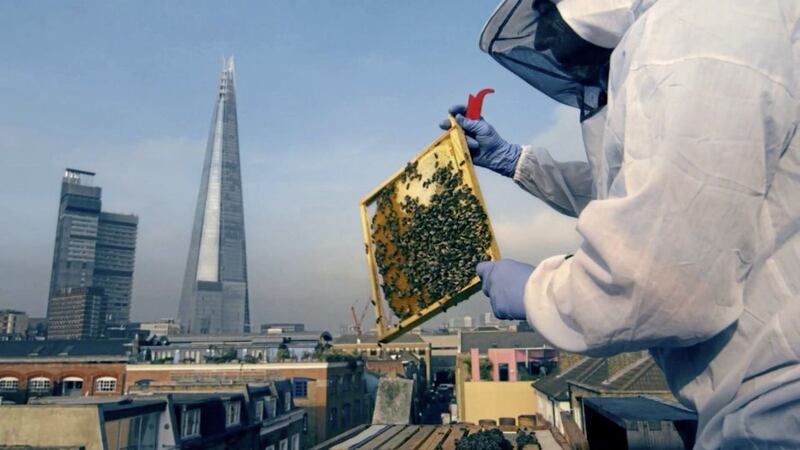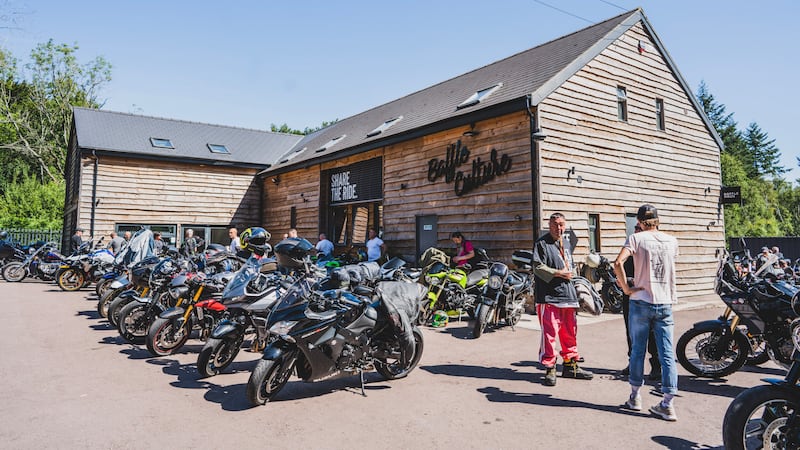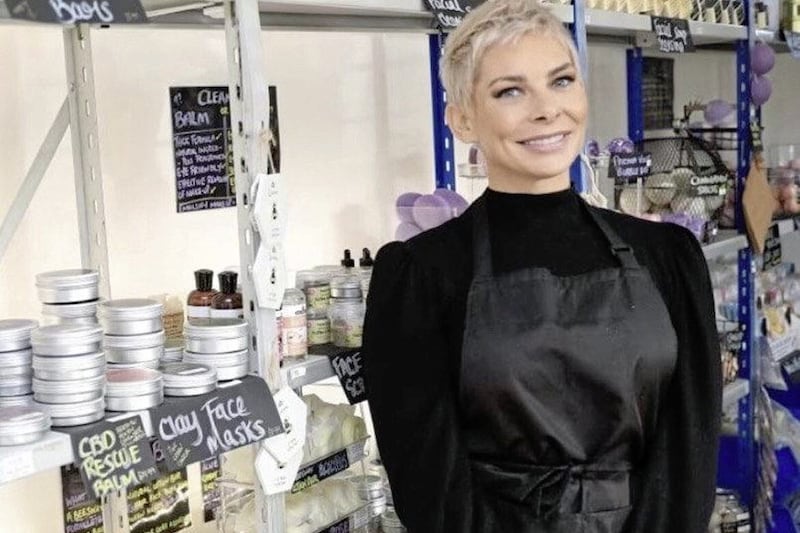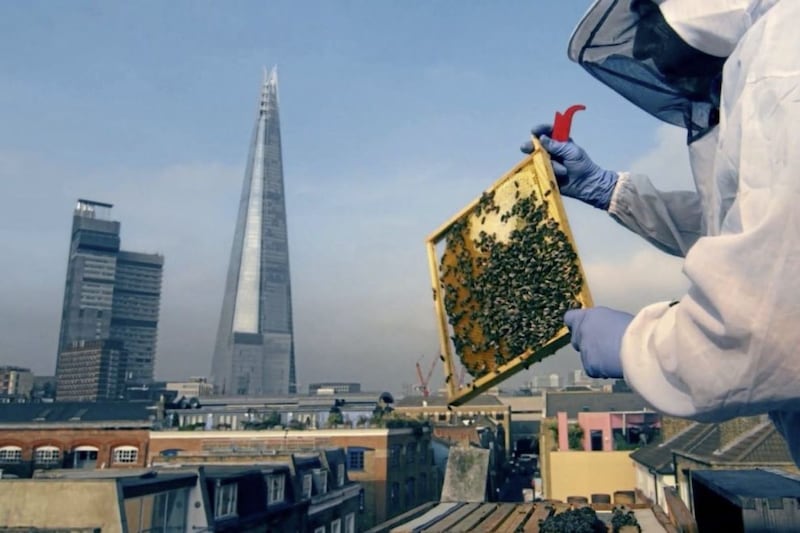IN BERMONDSEY, south-east London, there is a family of beehives on a rooftop, overlooking The Shard.
Apiarist Dale Gibson and his wife Sarah, who produce raw, unprocessed artisanal honey sold as Bermondsey Street Honey, have found that despite being surrounded by a concrete jungle, their bees ("the girls") are pretty happy in the big city.
The couple are on a mission to educate people about honeybees: what they need to survive – particularly in urban environments – and what local communities can do to help.
Up on the roof, kitted out in a white beekeeping onesie with net visor, Dale begins to smoke one of the hives, to make the bees less agitated, before we lift the lid and take a look inside.
Bees are tree dwellers, so it's ingrained in them to fear smoke, which alerts them to forest fires.
"They respond to smoke by filling their bellies with honey to store it," says Dale, which explains why they move more slowly.
"They never take the risk that it's just me – an idiot in a bee suit!"
He removes the lid of the hive and slides out a frame covered in the shimmering bodies of hundreds of bees, all moving and shifting, their kinetic energy producing a ripple effect across the honeycomb beneath them.
Dale points out the queen, who is more than double the size of her sisters, lolloping about.
The hive is completely sterile on the inside and tends to lose about 300 bees a day, though in the height of summer, it can be home to a whopping 70,000 honeybees – who all need to feed, forage, and complete their set task within the hive if there's going to be any honey produced at all.
And for that, they need decent foraging sites...
It's really easy to help your local bees – it just requires some clever planting.
Sarah explains that scattering wild seed packets isn't always ideal. In the first year, the flowers can provide solid foraging for bees, but in the second and third years, the taller meadow flowers will swamp the smaller ones, and bees often prefer smaller flowers, closer to the ground.
If they're drowned out by the taller plants, the bees just can't get to what they need.
So, what plants do bees love? Honeybees only forage on one flower species at a time, so Sarah recommends planting in drifts and clumps. Try:
1. Blue and purple plants – bees find them most attractive, so forget-me-nots, hyacinths and heathers are all good.
2. As summer approaches, cornflowers, thyme, rosemary, chives, strawberries, mint, lavender and oregano, as well as passion fruit, honeysuckle, dog rose and borage are all ideal.
3. Save yourself some work by leaving the grass unmown, or just mow less regularly, so bees can collect nectar from daisies and clover, as well as dandelions. ("A dandelion is like McDonald's for bees – a fast fat resource.")
4. Only have a small balcony or a bit of roof? Bees aren't picky, they don't discriminate if your plants are in pots and containers, as long as they're filled with flowers.






